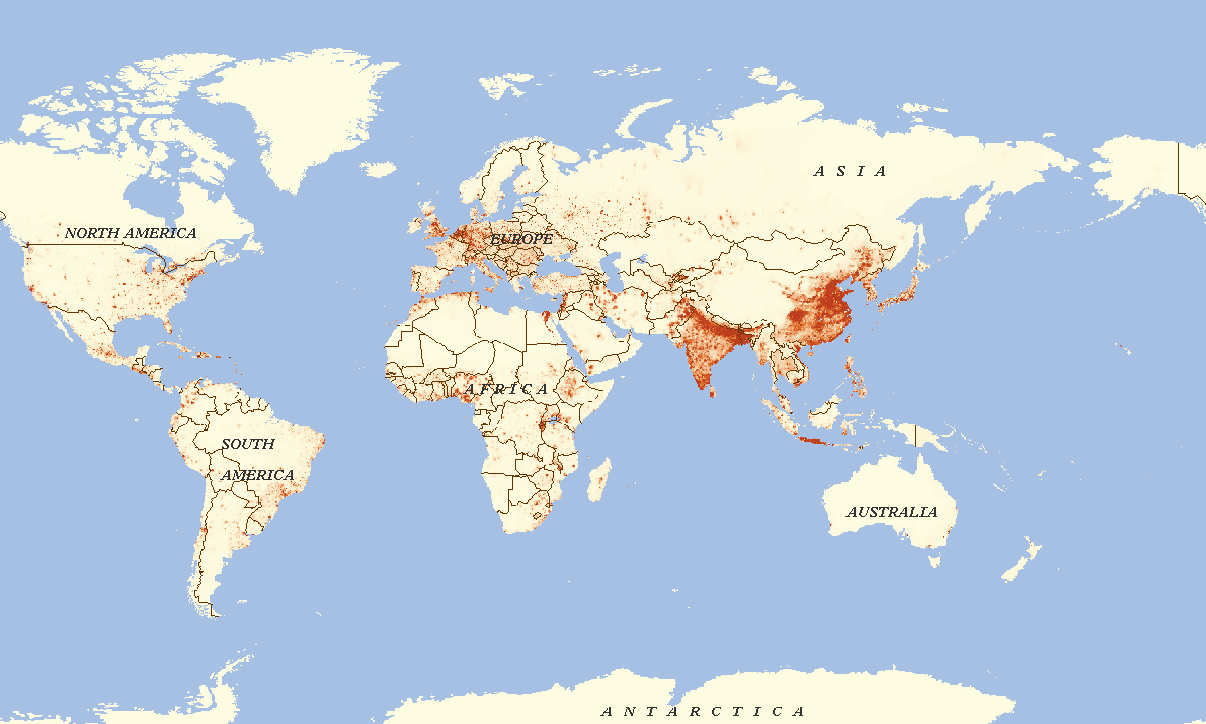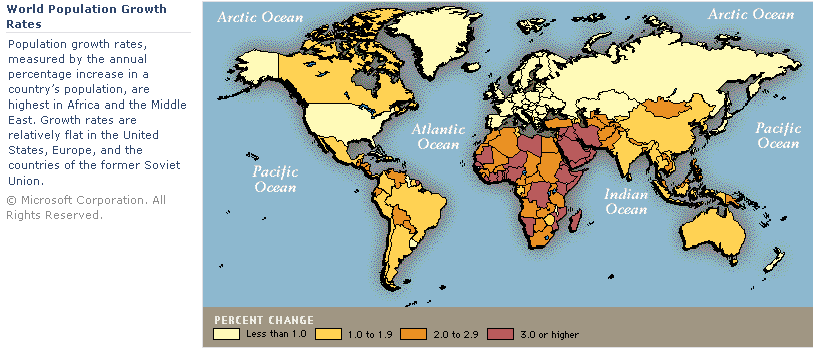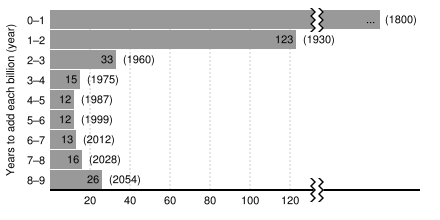Population Under the Firmament
I've been interested in the issue of population in recent years. Such study is called demographics. I have been wondering about which place in the world makes a better abode, and as well which place is densely populated. Here's a bird's eye view.

Apparently, east part of China and entire India are woeful. Good thing that their population growth is checked.

The Population and Technology of Human Animals

Imagine, for the first few thousands years of human animals, its population is under one billion. But, in a short 123 years after the first billion in 1800, human heads count to another billion. The sharp contrast between few thousands years versus just over a hundred years is amazing. How is that, human animals all of a sudden multiplied themselves ten fold? Like, did they suddenly decided they need more babies?
The answer to that is: Technology. It is not that human animals suddenly decided to have more babies. They have always fucked and with that the consequence of babies. However, nature is unforgiving, in that it has droughts, plagues, tigers to put human animal's numbers in check. However, human's technology changed this.
It is technology, that has made human animals powerful in increasing their numbers. Note that 1800s is what people call the Industrial Age, where machinery, such as steam engines and factories, were born, and there's all other sciences and discoveries such as vaccines etc. Now, look at the graph again. To grow another one billion, it took just 33 years in the 1900s. This tells us, the incredible power and impact of technology and its exponential growth nature. Also of interest, is that 1900s is where World War One and World War Two happened. WWI killed 15 million. WWII killed 55 million, by far the largest mass-death as a single event in human history. Together they made 70 million perish. However, despite their oft-cited shocking value, it's no matter; The human animal's numerousness and propagation rate went on to increase basically sans a dent.
In 1975, it took just 15 years to add another billion, and 12 years after that in 1987. Another 1 billion is added after 12 years, in 1999, to reach a total of 6 billion. As of 2006, there are 6.5 giga human animals walking on this earth, and the 7th billion hit us in 2012.
Since the 1800s, there's a worry about “Malthusian catastrophe”. Meaning of the fact that, people will just multiply to beget more, and more beget more, and very soon the needs of people such as food, will not be enough to sustain all human animals, then great calamity comes. Although no Malthusian catastrophe has occurred as world-wide dire catastrophe, but its manifestation is clearly seen regionally in some poor nations such as Africa and in China ( Great Leap Forward, 1958 to 1961). Meanwhile, apparently, Malthusian catastrophe is no match for human's technology, and in rich nations of today's world such as Japan or Hong Kong, or metropolis sprawls in Europe or USA, the localities are very densely populated and people there often suffer from obesity! In particular, farming by modern technologies have increased its efficiencies tens fold. Efficiencies in food safety, distribution, storage etc all massively increased in parallel.
Some good Wikipedia articles on population:
- World population
- UN Human Development Index
- List of the most densely populated country subdivisions
- List of cities proper by population density
- List of countries by population density
Note: Density by Country is not a good indicator because countries vary greatly in size and the population distribution. For example, density by country makes China rank 75 with 138 people per km². However, a good half of China is plateau or desert barely inhabited, while the population density of east side of China is very high.
[etymology of Firmament https://www.etymonline.com/word/Firmament] «mid-13c., from Old French firmament or directly from Latin firmamentum “firmament,” literally “a support, a strengthening,” from firmus “strong, steadfast, enduring” (see firm (adj.)). Used in Late Latin in the Vulgate to translate Greek stereoma “firm or solid structure,” which translated Hebrew raqia, a word used of both the vault of the sky and the floor of the earth in the Old Testament, probably literally “expanse,” from raqa “to spread out,” but in Syriac meaning “to make firm or solid,” hence the erroneous translation. Related: Firmamental.»